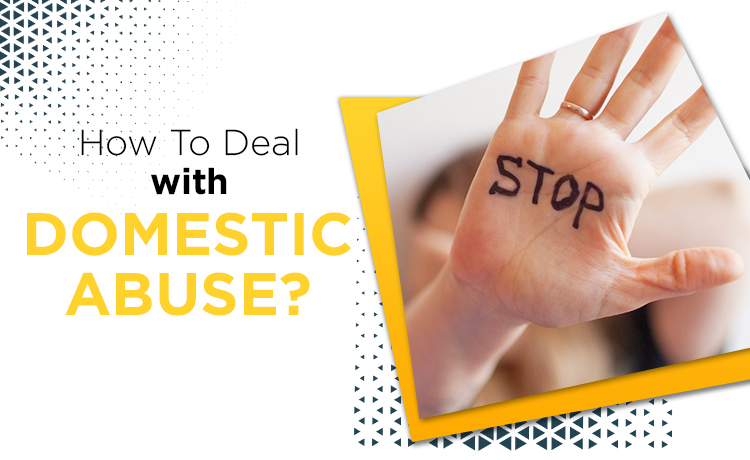If domestic abuse is as traumatic as being portrayed, then why do many women stay in an abusive relationship? To better understand, we need to know that domestic abuse happens because of the desire to gain dominance, control, and power over a partner. Admittedly, domestic violence does not discriminate against gender, race, or social status. However, statistics have shown that more men are perpetrators of abuse, and women fall victim to violence.
The Women’s Aid Organization describes domestic violence as a cycle. It says that the cycle begins with tension building, followed by the incident of abuse, reconciliation, and then calm in the relationship. Domestic violence happens between partners with intimate relationships. And abusers conduct different strategies to destroy the self-worth of the victim. Abuse can be in different forms, such as physical, sexual, emotional, financial, social, and psychological. Perpetrators will use more than one type of abuse to ensure that victims become fearful and incapable of leaving the relationship. The victim will then be coerced to behave just as the abuser wants. But the most crucial information that women need to know is that no one deserves to be abused.
Signs Of Domestic Abuse
Some women will have a difficult time processing the abuse that is happening to them. Looking into the cycle, there is a period where an abuser will apologize, deny, or minimize the incident of violence. Abusers will hide in the guise of alcohol, blame the victim, or claim that their action is nothing to worry about. A honeymoon stage or calmness follows the cycle. During this stage, the abuser may be fantasizing about the next move. So how can a woman identify if she is in an abusive relationship?
The Behavior Of Perpetrators Of Domestic Violence
Perpetrators of domestic violence chips on the victim’s feelings of self-worth. The process starts with the perpetrator yelling, humiliating, and criticizing their partner in front of the victim’s family and friends, and even putting them down at every chance they get. They will ignore their partner’s accomplishments and opinions. And they will blame them in every abusive incident that happens. Perpetrators treat their partners like an object that they can control.
Abusers have unpredictable patterns of behaviors, which usually involve jealousy, possessiveness, and condescending, demeaning words. They threaten their partner and children. They would restrict them to visit friends and family. They will threaten to commit suicide if the woman leaves them. They would destroy things relevant to their partner. They will force women to have sex or to use drugs. And they limit their partner’s access to money, car, or phone.
The Feelings Of The Victim Of Domestic Violence
An abused woman is generally fearful of her partner. She is walking on eggshells when her partner is around. She will avoid topics in a conversation that she knows would anger her partner. She will continuously check her behavior to find approval. And when the incident of abuse happens, she would convince herself that she deserved it. She will struggle with the feeling of being crazy, helpless, or uncaring of her circumstances.
Ways To Get Help
Leaving an abusive relationship will be a difficult decision for victims. Perpetrators usually minimize the abuse or blame the victims. This results in an underestimation of the danger and the effect of abuse on victims and their children. So the first way to get help is to learn the signs of domestic abuse and the rights of women. A woman must accept that she is in a dangerous situation and that she needs help. She needs to know her worth and stand up for her and her children.
Getting The Right Support
A victim of domestic abuse needs to find support from trusted friends or family members. Someone who can help get more support from the community, police, or shelter. Government authorities and/or the police are trained to respond to domestic violence. A hotline for help is also vital at this time. A woman should never hesitate to call support and not wait until another incident happens.
Planning For Safety
With the help of a support person, a victim needs to develop a safety plan when violence occurs. The plan should be as detailed as possible and should include the children. A safety plan can consist of means of transportation, money, and change of clothes for quick departure. A counselor or the police can help with the safety plan or rescue operation, including actions to take during tension building. They can also provide referrals for shelter or a place of refuge.
Consult For Medical Treatment
Injuries as a result of physical and/or sexual abuse should be appropriately documented with the help of medical evaluation. This will serve as evidence when legal action is the next course of action. This is also necessary to help with physical healing from the injuries. Counseling and therapy are also needed to help with the trauma caused by the abuse.
Helping Victims Of Domestic Abuse
The most important help we can give victims of domestic abuse is to believe them. It’s essential to validate their feelings and help them reestablish their self-worth. We can also get involved by connecting the victim to authorities such as the police. We can also help with the movement against domestic abuse like MummyJene. She uses her platform to inspire beauty and health to empower women. She also teaches women how to become successful as work at home business owners. And more importantly, she uses her voice to educate women about domestic abuse.








